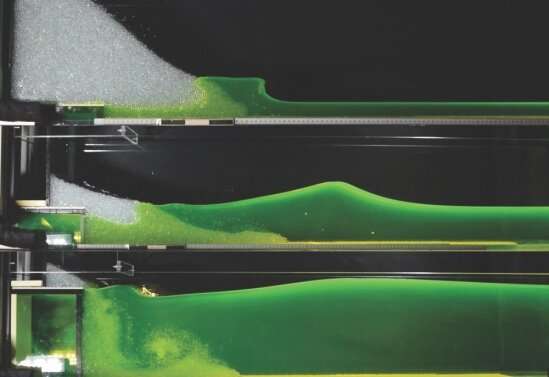Phys.org June 21, 2021
Currently, there is a large gap in the predictions of tsunamis based on simplified models that consider the field complexity but do not capture the physics of the landslide as it enters the water. An international team of researchers (France, USA – UC Santa Barbara) measured the volume of a granular material and released it, causing it to collapse into a long, narrow channel filled with water. They found that while the density and diameter of the grains within a landslide had little effect on the amplitude of the wave, the total volume of the grains and the depth of the liquid played much more crucial roles. As the grains enter the water, they act as a piston, the horizontal force of which governs the formation of the wave, including its amplitude relative to the depth of the water. The experiments also showed that if we know the geometry of the initial column before it collapses and the depth of the water where it lands, we can predict the amplitude of the wave. According to the researchers their model contributes to a better understanding of the rich hydrodynamics of the generated waves… read more. TECHNICAL ARTICLE

An illustration reflecting the fluid dynamics of a tsunami. Credit: FAST and UC Santa Barbara